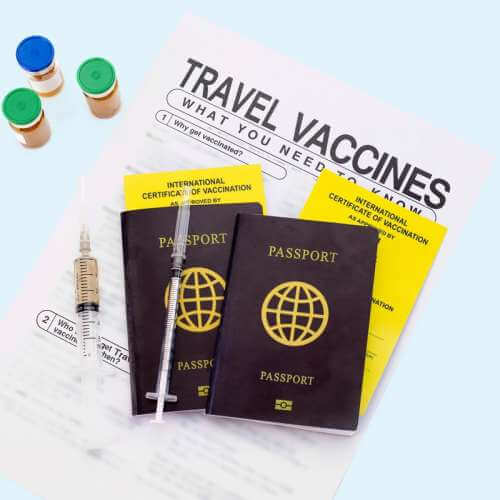Lorem ipsum dolor sit amet, consectetur adipiscing elit. Ut elit tellus, luctus nec ullamcorper mattis, pulvinar dapibus leo.
Hormone – Male Profile
This complete profile analyses the range of hormones that affect everay aspect of a mna’s health and wellness. Everything from energy, strength, concentration, mood, libido, to muscle strength and bone health is dependent on these hormones being at the right level and in balance. Testosterone and all the other essentail hormones steadily reduce after the age of 30 with rapidly accelerating loss later in life – particularly from 60. The optimum levels needed for maximum male health and wellness are debated but whatever you decide about treatment, you need to start with understanding and monitoring these hormones. All of these hormones exist in both men and women but in very different conentrations and have very different functions if you are male. Testosterone we all know is directly associated with most of the a man’s physical characteristics of bone mass, fat distribution, muscle mass and strength and it is also essential in the production of red blood cells and sperm. A small amount of testosterone is converted to oestradiol which is also essential for healthy libido, erectile function and making sperm. Prolactin has a vital role in balancing the production of testosterone. LH also is essential to producing testosterone while FSH stimulates sperm production DHEAS is essential to make testosterone and this oestradiol in men in the first place, and SHBG manages how much testosterone can be useful to all your tissues. The complex interplay between all these hormones is responsible for so much there is to being a healthy man, physically and mentally.
Read MoreHtlv 1& 2 Antibodies (Human T Lymphotropic Virus Type I-II)
HTLV 1&2 Antibodies (Human T Lymphotropic Virus Type I-II) detect antibodies to HTLV-1 and HTLV-2 viruses, which can cause certain types of leukaemia and other disorders. Testing helps in diagnosing and managing these conditions.
Read MoreImmunoglobulin A (IgA)
Immunoglobulin A (IgA) is an antibody that plays a crucial role in the immune function of mucosal areas. Abnormal levels can indicate immune disorders, infections, or gastrointestinal diseases.
Read MoreImmunoglobulin E (IgE)
Immunoglobulin E (IgE) is an antibody involved in allergic reactions. Elevated levels are associated with allergies and asthma. Testing IgE helps diagnose and manage allergic conditions.
Read MoreImmunoglobulin G (IgG)
Immunoglobulin G (IgG) is the most common antibody in the blood and is crucial for long-term immunity. Abnormal levels can indicate chronic infections, autoimmune diseases, or immune deficiencies.
Read MoreImmunoglobulin M (IgM)
Immunoglobulin M (IgM) is the first antibody produced in response to infection. Elevated levels can indicate recent or acute infections. Testing IgM helps diagnose and monitor infections.
Read MoreImmunoglobulins (IgG, IgM, IgA) Profile
The test measures the levels of immunoglobulins, specifically IgG, IgM, and IgA, in the blood. Immunoglobulins are antibodies produced by the immune system to help fight off infections and protect against diseases. Abnormal levels of immunoglobulins can indicate various health conditions, including: 1. Immunodeficiency disorders: Low levels of immunoglobulins may suggest a weakened immune system, making individuals more susceptible to infections. 2. Autoimmune disorders: Elevated levels of immunoglobulins may be seen in autoimmune diseases such as rheumatoid arthritis, lupus, or multiple sclerosis. 3. Allergies: Increased levels of immunoglobulin E (IgE) are associated with allergic reactions and conditions like asthma, hay fever, or food allergies. 4. Chronic infections: Certain chronic infections, such as hepatitis or HIV, can cause changes in immunoglobulin levels. 5. Multiple myeloma: Abnormal levels of immunoglobulins, particularly IgG or IgA, can be indicative of this type of cancer affecting plasma cells.
Read MoreInsulin
Insulin is a hormone that regulates blood glucose levels. Abnormal levels can indicate diabetes or insulin resistance. Testing insulin helps diagnose and manage these conditions.
Read MoreInsulin Resistance (Homa Index)
Insulin Resistance (HOMA Index) is a calculation used to estimate insulin sensitivity and resistance. Elevated levels indicate insulin resistance, which is associated with diabetes and metabolic syndrome.
Read MoreInsulin-Like Growth Factor 1
Insulin-Like Growth Factor 1 (IGF-1) is a hormone that plays a role in growth and development. Abnormal levels can indicate growth disorders or endocrine conditions. Testing IGF-1 helps assess these conditions.
Read MoreInterleukin-2 (Il-2)
Interleukin-2 (IL-2) is a cytokine involved in immune responses and cell growth. Elevated levels can indicate immune activation or disorders. Testing IL-2 helps assess immune function and related conditions.
Read MoreInterleukin-4 (Il-4)
Interleukin-4 (IL-4) is a cytokine involved in immune responses and inflammation. Elevated levels can indicate allergic reactions or autoimmune disorders. Testing IL-4 helps diagnose and manage these conditions.
Read MoreInterleukin-6 (Il-6)
Interleukin-6 (IL-6) is a cytokine involved in inflammation and immune responses. Elevated levels can indicate infections, chronic inflammatory conditions, or certain cancers. Testing IL-6 helps in diagnosis and monitoring.
Read MoreInterleukin-8 (Il-8)
Interleukin-8 (IL-8) is a cytokine that plays a role in inflammation and immune responses. Elevated levels can indicate infections, inflammation, or certain diseases. Testing IL-8 helps assess these conditions.
Read More





